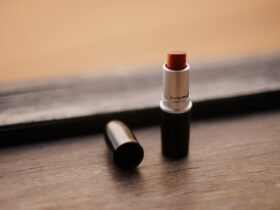The Ultimate Guide to Increasing Keratin for Healthier Hair, Skin, and Nails
Are you tired of dealing with weak, dull hair, brittle nails, or lackluster skin? It might be time to pay closer attention to your keratin levels. Keratin is the protein that makes up your hair, skin, and nails, and maintaining healthy levels of keratin is essential for their strength and vitality.
In this comprehensive guide, we’ll explore the importance of keratin, surprising statistics about keratin deficiency, and practical tips for boosting your keratin levels to achieve healthier hair, skin, and nails.
Understanding the Importance of Keratin
Before we dive into the strategies for increasing keratin, let’s take a closer look at the vital role this protein plays in maintaining the health and appearance of your hair, skin, and nails.
What is Keratin?
Keratin is a fibrous structural protein that serves as the key building block for the hair, skin, and nails. It provides strength, resilience, and protection against damage, making it essential for maintaining the health and beauty of these external features.
The Role of Keratin in Hair, Skin, and Nails
– Hair: Keratin forms the structure of each hair strand, contributing to its strength and elasticity. Healthy keratin levels are crucial for preventing breakage, maintaining shine, and promoting overall hair health.
– Skin: In the skin, keratin helps to form a protective barrier that shields against environmental toxins, pollutants, and microorganisms. Adequate keratin levels are essential for maintaining smooth, supple, and resilient skin.
– Nails: Keratin is responsible for the hardness and durability of the nails. It helps prevent brittleness, peeling, and cracking, promoting strong and beautiful nails.
Surprising Statistics about Keratin Deficiency
Now that we understand the significance of keratin, let’s delve into some eye-opening statistics that highlight the impact of keratin deficiency on the health and appearance of hair, skin, and nails.
1. Hair Loss and Keratin Depletion
– According to a study published in the *Journal of Investigative Dermatology*, inadequate keratin levels can contribute to hair loss and thinning, affecting both men and women.
2. Nail Disorders and Keratin Imbalance
– Research conducted by dermatologists has revealed a correlation between low keratin levels and various nail disorders, including brittle nails, ridges, and slow growth.
3. Skin Aging and Keratin Insufficiency
– Studies have shown that decreased keratin production is associated with accelerated skin aging, leading to wrinkles, sagging, and a loss of elasticity.
These statistics underscore the critical importance of maintaining optimal keratin levels for the health and vitality of our hair, skin, and nails.
How to Boost Your Keratin Levels
Now that we appreciate the significance of keratin, let’s explore practical steps you can take to enhance your body’s production of this essential protein.
1. Follow a Balanced Diet
– Protein-Rich Foods: Incorporate protein sources such as eggs, fish, lean meats, and legumes into your diet. Protein provides the building blocks (amino acids) necessary for keratin synthesis.
– Vitamins and Minerals: Consume foods rich in vitamins A and C, as well as biotin, zinc, and iron, all of which support keratin production and overall hair, skin, and nail health.
2. Use Keratin-Enriched Hair Care Products
– Look for shampoos, conditioners, and hair treatments containing keratin or keratin-boosting ingredients. These products can help fortify and nourish your hair from the outside, enhancing its strength and shine.
3. Prioritize Scalp Health
– A healthy scalp is essential for supporting robust hair growth and keratin production. Regular scalp massages, gentle exfoliation, and using scalp-nourishing oils can help create an optimal environment for keratin synthesis.
4. Protect Your Nails
– Wear gloves while doing chores that involve water exposure or harsh chemicals. This can prevent weakening of the nails due to prolonged contact with damaging substances.
5. Maintain Skin Hydration
– Hydrated skin is more resilient and less prone to damage. Use moisturizers with skin-nourishing ingredients to support the production of keratin in the skin.
Applying Keratin Boosting Strategies in Your Daily Life
Incorporating these keratin-boosting strategies into your daily routine can lead to noticeable improvements in the health and appearance of your hair, skin, and nails. Here’s a simple plan to help you integrate these practices into your lifestyle:
Morning Routine
1. Start your day with a nutritious breakfast that includes protein-rich foods like eggs or Greek yogurt.
2. Use a keratin-infused shampoo and conditioner while showering to nourish your hair.
3. Apply a moisturizer with vitamin A and C to support skin health.
Daytime
1. Stay hydrated by drinking plenty of water throughout the day to support overall skin hydration.
2. Snack on nuts or seeds as a source of biotin and zinc, both beneficial for keratin production.
Evening Routine
1. Wind down with a dinner that includes lean protein sources such as fish or tofu.
2. Perform a gentle scalp massage while washing your hair to promote circulation and encourage keratin synthesis.
3. Apply a nail-strengthening treatment before bedtime to protect and nourish your nails while you sleep.
By integrating these simple practices into your daily life, you can gradually enhance your body’s keratin production, leading to healthier and more resilient hair, skin, and nails.
In Summary
Maintaining optimal keratin levels is essential for the health and vitality of our hair, skin, and nails. By understanding the significance of keratin, making informed lifestyle choices, and adopting targeted strategies, you can support your body in producing this vital protein, leading to improved overall well-being and a more radiant appearance.
Remember, healthy hair, skin, and nails are not just about aesthetic appeal; they’re also indicators of our internal health. So, embrace the journey of nurturing your keratin levels, and enjoy the transformative effects it brings to your external and internal wellness.












